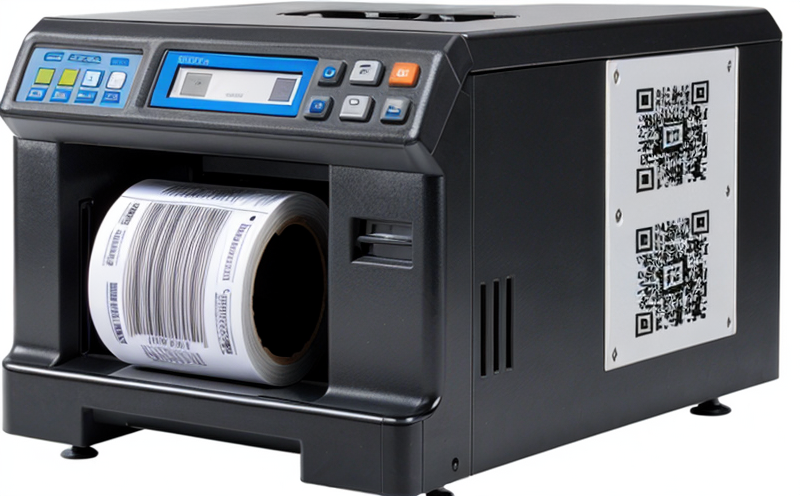GS1 QR Code Print Quality Test
In today’s fast-paced global market, accurate and reliable product identification is crucial. The GS1 QR Code Print Quality Test ensures that barcodes used in packaging meet the highest international standards for readability and durability. This test plays a pivotal role in ensuring compliance with regulatory requirements, enhancing brand reputation, and streamlining supply chain processes.
The GS1 standard provides a set of rules and guidelines for creating and printing QR codes to ensure they are universally readable by scanners across various industries. A poorly printed or damaged QR code can lead to scanning failures, which in turn could result in lost sales opportunities due to missed retail shelf space, or increased costs associated with returns and recalls.
The test involves the following key steps:
- Preparation of the specimen: Ensure the barcode is printed on a suitable substrate using appropriate ink and printing technology.
- Environmental conditions: Maintain consistent temperature, humidity, and lighting during the print process to avoid any variations that could affect readability.
- Instrumentation: Utilize high-resolution scanning equipment to evaluate the print quality of the QR code. This includes checking for sharpness, contrast, alignment, and overall legibility under various conditions.
The primary goal is to ensure that the QR code can be accurately scanned by a variety of devices, including smartphones, barcode scanners, and automated systems used in retail environments, manufacturing lines, and logistics hubs. This ensures seamless integration into supply chain processes and enhances consumer confidence in brand reliability.
Compliance with GS1 standards is essential for businesses operating internationally or dealing with global partners. Non-compliance can lead to operational disruptions, customer dissatisfaction, and potential legal issues. By adhering to these rigorous testing protocols, companies can mitigate risks associated with barcode inaccuracies and ensure their products are recognized accurately across various platforms.
Applied Standards
| Standard Code | Description |
|---|---|
| ISO/IEC 18004:2015 | International standard for QR codes that specifies the encoding rules, error correction capabilities, and format of data within a QR code. |
| EN ISO/IEC 6723-1:2008 | European standard detailing barcode symbologies including QR codes for industrial use. |
The GS1 QR Code Print Quality Test aligns with these standards to ensure that the printed QR codes meet international best practices. The test involves rigorous checks such as contrast, sharpness, alignment, and error correction capability verification to guarantee high-quality printouts.
Benefits
Implementing a GS1 QR Code Print Quality Test offers numerous advantages for businesses:
- Enhanced Brand Reputation: Ensures that products are accurately identified, reducing the risk of errors and mislabeling.
- Improved Customer Satisfaction: Reliable scanning ensures a seamless shopping experience, which is crucial for maintaining customer loyalty.
- Increased Operational Efficiency: Reduces time spent on troubleshooting issues related to poor barcode readability, thus streamlining workflows.
- Compliance with Regulatory Standards: Ensures that all products are compliant with international and local regulations, avoiding potential legal and financial penalties.
Customer Impact and Satisfaction
| Impact Area | Description |
|---|---|
| Supply Chain Efficiency: | Streamlines processes by ensuring that all products can be accurately identified and tracked, reducing errors and delays. |
| Customer Experience: | Improves the shopping experience by ensuring smooth product identification, enhancing customer satisfaction and loyalty. |





